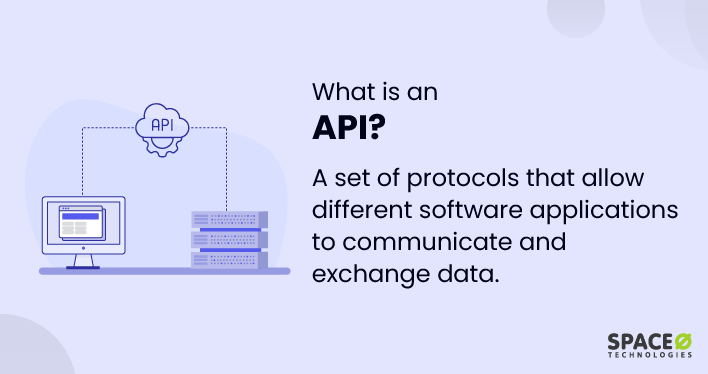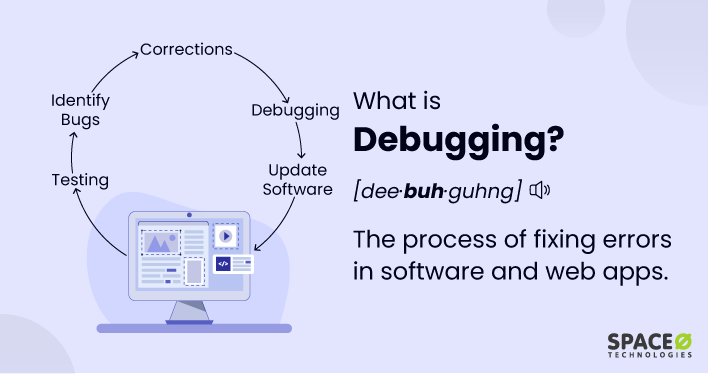Table of Contents
What is an API?
API refers to a set of rules, protocols, and tools that enable different software applications to communicate and interact with each other. An API defines the methods and data formats that developers use to request and exchange information between applications, allowing them to access and utilize the functionality of another software component, service, or platform.
APIs serve as intermediaries, enabling seamless integration between different systems. They provide a well-defined interface that abstracts the software’s complexity, allowing developers to interact without understanding its internal workings. By following API guidelines, developers leverage existing functionalities, services, or resources, saving time and effort in their own application development.
APIs are crucial for seamless communication and data exchange between system components, enabling integration among various systems. They form a fundamental component in well-designed web application architecture, connecting software applications and services to create a cohesive ecosystem. For a deeper understanding go through our guide on web application architecture which explores the working and renditions in modern web applications.
- When a weather app is used to check the current temperature, it sends a request to a weather API.
- The weather API processes the request, gathers the temperature data from a weather database, and sends it back to the app.
- The app receives the temperature data from the API and displays it to you on your device.
For example,
How Does API Work?
APIs work by providing a set of rules and protocols that allow different software applications to communicate and interact with each other. Here’s a simplified explanation of how APIs work:
- Request: An application sends a request to an API to perform a specific action or retrieve data. The request typically includes information about the desired operation, parameters, and authentication credentials if required.
- Processing: The API receives the request and processes it according to its predefined rules and protocols. This may involve validating the request, checking authentication credentials, and determining the appropriate action or data to return.
- Data Retrieval/Action: If the request involves retrieving data, the API accesses the relevant data sources, such as databases or external services, to gather the requested information. If the request involves performing an action, the API carries out the necessary operations or communicates with other systems to fulfill the request.
- Response: Once the API has processed the request and obtained the necessary data or completed the action, it formulates a response. The response typically includes a status code indicating the success or failure of the request, along with any requested data or relevant information.
- Delivery: The API sends the response back to the requesting application, usually over the Internet using standard communication protocols like HTTP. The application receives the response and can then utilize the data or information provided.
By following the guidelines and protocols defined by the API, developers seamlessly integrate external services, leverage existing functionalities, and build applications that interact with other systems.
7 Main Types of API
Here are the 7 main types of API, you need to know.
- Web APIs: These APIs are designed to be accessed over the internet using standard protocols such as HTTP. They enable communication between different web-based applications and allow developers to retrieve data or perform actions on remote servers.
- REST APIs: REST APIs also known as (Representational State Transfer) are a popular architectural style for web services. They use HTTP methods like GET, POST, PUT, and DELETE to perform operations on resources. REST APIs are widely used and follow a stateless, client-server communication model. Want to know more about RESTful API? Refer to our article for a brief explanation of RESTful API.
- SOAP APIs: SOAP (Simple Object Access Protocol) APIs are based on XML and are typically used for more complex and enterprise-level integrations. They use a predefined set of rules and standards for communication between applications, offering features such as security and reliable messaging.
- GraphQL APIs: GraphQL is a query language and runtime for APIs that provides a flexible and efficient approach to data retrieval. With GraphQL APIs, clients can specify exactly what data they need, reducing over-fetching or under-fetching of data.
- Real-time APIs: Real-time APIs enable instant communication and updates between applications. They use technologies like WebSockets to establish a persistent connection, allowing for real-time data streaming, instant messaging, or collaborative applications.
- Library or Framework APIs: These APIs are provided by software libraries or frameworks and offer pre-built functions and modules to simplify application development. They provide a set of tools and abstractions that developers can use to build applications without having to implement low-level functionality from scratch.
- Operating System APIs: Operating System (OS) APIs provide developers with access to the underlying functions and resources of an operating system. They allow applications to interact with hardware, manage files, handle network connections, and perform various system-level operations.
These are just a few examples of API types, and there are many other specialized APIs available for specific domains or technologies. The choice of API type, such as REST API, SOAP API, or other specialized or modern APIs, depends on the specific requirements of the application and the systems it needs to integrate with.
In conclusion, an API (Application Programming Interface) is a set of rules and protocols that enable software applications to communicate and interact with each other, providing a standardized interface for seamless integration. APIs simplify development, leverage existing functionalities, and enable interoperability between different systems, making them a fundamental component in modern software development.




